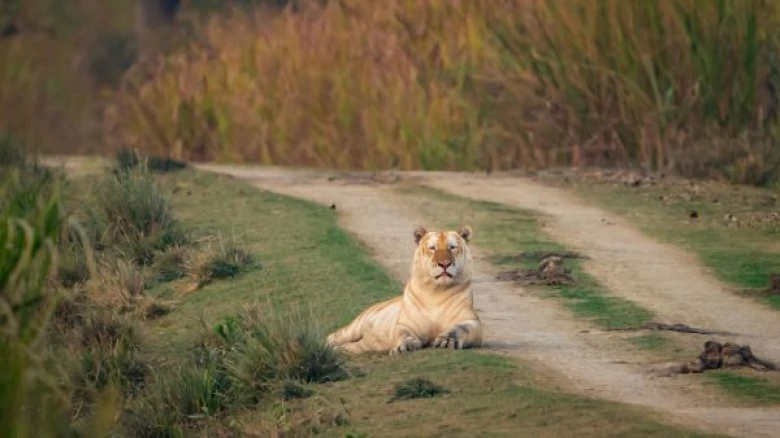National

Conservationists are concerned that the golden colour of the tigers in Kaziranga results from inbreeding. In species where outbreeding is the norm, inbreeding occurs when close relatives mate.
Digital Desk: One in every ten thousand tiger cubs is born as a white tiger, making it a rare phenomenon. While the golden tiger is even rare, experts call it a genetic “spelling mistake." Despite being the most suitable tiger habitat, Kaziranga is witnessing a growing population of golden tigers. According to Kaziranga management, it has more than four golden tigers living in the wild.
Kaziranga has 70 per cent of Assam’s tiger population, which is 190 tigers and is considered the most suitable habitat for tigers, according to Kota Ullas Karanth, a conservationist and the founder of the Centre for Wildlife Studies in India. He considers Assam one of the "most productive habitats for tigers" in northeast India because of the area's alluvial grasslands, which draw tiger prey, and strict law enforcement that cracks down on poaching and hunting.
Uma Ramakrishnan, an ecology professor at the National Center for Biological Sciences in India, claims that golden tigers, like white and snow-white tigers, are the product of a recessive characteristic that manifests as a mutation in colour-creating genes.
Why does this spelling mistake happen?
Conservationists are concerned that the golden colour of the tigers in Kaziranga results from inbreeding. In species where outbreeding is the norm, inbreeding occurs when close relatives mate. Inbreeding occurs when a parent and daughter, brother and sister, or first cousin mate. Numerous plant and animal species have developed strategies to reduce near inbreeding.
Experts are of the view that these peculiar fur patterns are more frequently observed in captive tiger groups, which are frequently related to each other. However, the phenomenon is still being studied.
When tigers generally do not inbreed, why are tigers in Kaziranga mating with relatives?
Due to the area's growing urbanization, wildlife is losing its traditional movement routes across habitats. A 2020 assessment showed that the park's forest corridors are disappearing and that fragmentation is growing. Rabindra Sharma, Kaziranga research officer, stated in his post on X that problems like inbreeding will endanger the tiger population in Kaziranga if it grows further isolated.
"A more resilient, genetically diverse tiger population can only be built through better habitat connectivity between populations, which can be achieved by promoting land uses that encourage long-range movements of tigers," claims Karanth. "In certain situations, buildings like bridges and tunnels built over hazardous or challenging environments may also be helpful."
Leave A Comment